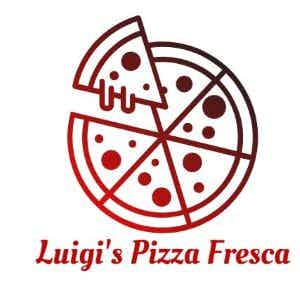They are one of the most beloved desserts. Crispy and flaky on the outside, soft and satisfying on the inside. Holy cannoli!
Cannoli Near You
- Omar's Pizza
 Closed$5.40 Delivery4.7
Closed$5.40 Delivery4.7 - Gina's Pizzeria
 Open Now$5.15 Delivery4.6
Open Now$5.15 Delivery4.6 - Avolio's Italian Restaurant
 Closed$3.50 Delivery4.9
Closed$3.50 Delivery4.9 - Tomato Pie Pizza Joint
 Closed$2.99 Delivery4.8
Closed$2.99 Delivery4.8 - Osteria Pane e Vino
 Closed$7.40 Delivery4.5
Closed$7.40 Delivery4.5
- Omar's Pizza
 Closed$5.40 Delivery4.7
Closed$5.40 Delivery4.7 - Gina's Pizzeria
 Open Now$5.15 Delivery4.6
Open Now$5.15 Delivery4.6 - Avolio's Italian Restaurant
 Closed$3.50 Delivery4.9
Closed$3.50 Delivery4.9 - Tomato Pie Pizza Joint
 Closed$2.99 Delivery4.8
Closed$2.99 Delivery4.8 - Osteria Pane e Vino
 Closed$7.40 Delivery4.5
Closed$7.40 Delivery4.5 - Pietro's
 Closed$4.65 Delivery4.8
Closed$4.65 Delivery4.8 - Alessandro's Pizza Italian RestaurantOpen Now$7.65 Delivery4.6
- Big Mama's & Papa's Pizzeria
 Closed$3.99 Delivery5.0
Closed$3.99 Delivery5.0 - Eastside Italian Deli Downtown L.A.
.png?auto=format&fit=max&q=10) Closed
Closed - La Pasta
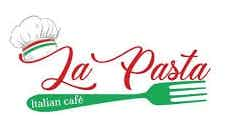 Closed$5.15 Delivery4.9
Closed$5.15 Delivery4.9 - Pozzetto Italian Dining
 Closed$3.90 Delivery4.7
Closed$3.90 Delivery4.7 - Tomato Pie Pizza Joint
 Closed$4.50 Delivery4.9
Closed$4.50 Delivery4.9 - Alza Osteria
 Closed$5.00 Delivery4.9
Closed$5.00 Delivery4.9 - Alessandro's PlaceOpen Now$5.00 - $15.00 Delivery4.8
- Terra Mia PizzeriaClosed$5.15 Delivery4.6
Cannoli
- Frank's TrattoriaOpen Now$2.00 Delivery4.9
- Chef David's Pizza & More
 Open Now$3.50 Delivery4.7
Open Now$3.50 Delivery4.7 - Little Italy Pizzeria & PastaOpen Now$2.99 - $3.50 Delivery4.6
- Sicilian Pizza & Pasta
 Open Now$5.00 Delivery4.9
Open Now$5.00 Delivery4.9 - Till Five Pizza
 Open Now$2.00 - $20.00 Delivery4.6
Open Now$2.00 - $20.00 Delivery4.6
- Frank's TrattoriaOpen Now$2.00 Delivery4.9
- Chef David's Pizza & More
 Open Now$3.50 Delivery4.7
Open Now$3.50 Delivery4.7 - Little Italy Pizzeria & PastaOpen Now$2.99 - $3.50 Delivery4.6
- Sicilian Pizza & Pasta
 Open Now$5.00 Delivery4.9
Open Now$5.00 Delivery4.9 - Till Five Pizza
 Open Now$2.00 - $20.00 Delivery4.6
Open Now$2.00 - $20.00 Delivery4.6 - Nick's Pizza & Grill
 Open Now$2.50 Delivery4.8
Open Now$2.50 Delivery4.8 - Sicilian PizzaOpen Now$5.00 Delivery5.0
- Broadway Pizza
.png?auto=format&fit=max&q=10) Open Now$3.99 - $5.99 Delivery4.5
Open Now$3.99 - $5.99 Delivery4.5 - Alessandro's Pizza Italian RestaurantOpen Now$7.65 Delivery4.6
- Alessandro's Pizza Italian RestaurantOpen Now$5.15 Delivery4.9
- Roma Pizza & Pasta
 Open Now$3.99 Delivery4.9
Open Now$3.99 Delivery4.9 - Sicilian Pizza & Pasta
 Open Now$3.50 Delivery4.7
Open Now$3.50 Delivery4.7 - Michaelangelo's Pizza
 Open Now$4.00 - $6.00 Delivery4.4
Open Now$4.00 - $6.00 Delivery4.4 - 327 Pizza CompanyOpen Now$5.00 Delivery3.8
- Michaelangelo's PizzaOpen Now$5.00 Delivery4.1
Best Cannoli in Chicago
- Broadway Pizza
.png?auto=format&fit=max&q=10) Open Now$3.99 - $5.99 Delivery4.5
Open Now$3.99 - $5.99 Delivery4.5 - Mama Luna's Restaurant & PizzeriaClosed$5.00 - $10.00 Delivery4.9
- Festa Pizza
 Closed$4.50 Delivery4.9
Closed$4.50 Delivery4.9 - The Art of Pizza - 3033 N ASHLAND LOCATION
 Closed$4.95 Delivery4.9
Closed$4.95 Delivery4.9 - Falco's Pizza Chicago
.jpg?auto=format&fit=max&q=10) Closed$4.99 Delivery4.9
Closed$4.99 Delivery4.9
- Broadway Pizza
.png?auto=format&fit=max&q=10) Open Now$3.99 - $5.99 Delivery4.5
Open Now$3.99 - $5.99 Delivery4.5 - Mama Luna's Restaurant & PizzeriaClosed$5.00 - $10.00 Delivery4.9
- Festa Pizza
 Closed$4.50 Delivery4.9
Closed$4.50 Delivery4.9 - The Art of Pizza - 3033 N ASHLAND LOCATION
 Closed$4.95 Delivery4.9
Closed$4.95 Delivery4.9 - Falco's Pizza Chicago
.jpg?auto=format&fit=max&q=10) Closed$4.99 Delivery4.9
Closed$4.99 Delivery4.9 - Pete's Pizza
 Closed$5.95 Delivery5.0
Closed$5.95 Delivery5.0 - Mama Luna's Restaurant & Pizzeria
 Closed$4.50 Delivery4.7
Closed$4.50 Delivery4.7 - Positano's PizzaClosed$5.00 Delivery4.9
- Vini's Pizza
 Closed$4.50 - $12.00 Delivery4.9
Closed$4.50 - $12.00 Delivery4.9 - Chikago Pizza
 Closed$4.50 Delivery4.9
Closed$4.50 Delivery4.9 - Via Carducci La Sorella
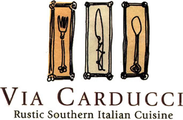 Closed$4.00 - $8.00 Delivery4.8
Closed$4.00 - $8.00 Delivery4.8 - Pizza Boy Chicago
 Closed$5.00 - $7.00 Delivery5.0
Closed$5.00 - $7.00 Delivery5.0 - Pat's Pizza
 Closed$5.00 Delivery4.7
Closed$5.00 Delivery4.7 - Suparossa
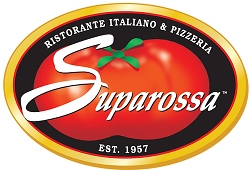 Closed$5.00 Delivery4.8
Closed$5.00 Delivery4.8 - Rosati's Pizza
 Closed$3.49 - $6.99 Delivery5.0
Closed$3.49 - $6.99 Delivery5.0
Best Cannoli in Las Vegas
- PB PizzaOpen Now$2.99 - $7.99 Delivery4.3
- Anthony & Mario's Broadway Pizzeria
 Closed$2.00 - $5.00 Delivery4.8
Closed$2.00 - $5.00 Delivery4.8 - Rocco's NY Pizzeria & Pasta - WINDMILL
 Closed$3.50 Delivery5.0
Closed$3.50 Delivery5.0 - Frank's Pizza Restaurant
 Closed$2.99 - $11.99 Delivery4.9
Closed$2.99 - $11.99 Delivery4.9 - Brooklyn's Best Pizza & Pasta
 Closed$5.00 - $6.00 Delivery4.8
Closed$5.00 - $6.00 Delivery4.8
- PB PizzaOpen Now$2.99 - $7.99 Delivery4.3
- Anthony & Mario's Broadway Pizzeria
 Closed$2.00 - $5.00 Delivery4.8
Closed$2.00 - $5.00 Delivery4.8 - Rocco's NY Pizzeria & Pasta - WINDMILL
 Closed$3.50 Delivery5.0
Closed$3.50 Delivery5.0 - Frank's Pizza Restaurant
 Closed$2.99 - $11.99 Delivery4.9
Closed$2.99 - $11.99 Delivery4.9 - Brooklyn's Best Pizza & Pasta
 Closed$5.00 - $6.00 Delivery4.8
Closed$5.00 - $6.00 Delivery4.8 - Fat Moe's Pizza & Wings
 Closed$5.00 - $7.00 Delivery4.9
Closed$5.00 - $7.00 Delivery4.9 - Rizzo's Pizzeria & Grill LLCClosed$4.95 Delivery4.9
- Palm Pizza
 Closed$4.90 Delivery4.9
Closed$4.90 Delivery4.9 - Santina's NY PizzeriaClosed$4.95 Delivery4.5
- Grinders Italian Guys Pizza
 Closed$3.99 - $5.99 Delivery5.0
Closed$3.99 - $5.99 Delivery5.0 - Sofia's Pizza
 Closed$5.00 Delivery4.5
Closed$5.00 Delivery4.5 - Giuseppe's Bar & Grille Las Vegas
.png?auto=format&fit=max&q=10) Closed$4.95 Delivery4.8
Closed$4.95 Delivery4.8 - Sicilian Guys Trattoria
.png?auto=format&fit=max&q=10) Closed$4.95 Delivery4.5
Closed$4.95 Delivery4.5 - Palm Pizza 2
 Closed$4.90 Delivery4.5
Closed$4.90 Delivery4.5 - STREGA Brick Oven Pizzeria
 Closed$4.95 Delivery5.0
Closed$4.95 Delivery5.0
Best Cannoli in Boston
- New York Pizza
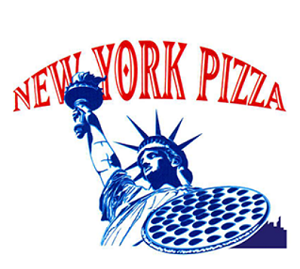 Closed$6.00 Delivery4.8
Closed$6.00 Delivery4.8 - New York Pizza
 Closed$5.00 Delivery4.3
Closed$5.00 Delivery4.3 - Rocco's Cucina & BarClosed5.0
- Lilly's Gourmet Pasta Express
 Closed$4.95 Delivery
Closed$4.95 Delivery
- New York Pizza
 Closed$6.00 Delivery4.8
Closed$6.00 Delivery4.8 - New York Pizza
 Closed$5.00 Delivery4.3
Closed$5.00 Delivery4.3 - Rocco's Cucina & BarClosed5.0
- Lilly's Gourmet Pasta Express
 Closed$4.95 Delivery
Closed$4.95 Delivery
Best Cannoli in Baltimore
- Ribaldi's Pizza & Subs
 Closed$4.90 Delivery5.0
Closed$4.90 Delivery5.0 - Filippo's Pizzeria
 Closed$1.50 Delivery4.9
Closed$1.50 Delivery4.9 - King's Pizza & Subs
 Closed$2.99 Delivery4.9
Closed$2.99 Delivery4.9 - HomeSlyce - Canton
 Closed$3.99 Delivery4.8
Closed$3.99 Delivery4.8 - Canton Pizza & Deli
 Closed$2.00 Delivery5.0
Closed$2.00 Delivery5.0
- Ribaldi's Pizza & Subs
 Closed$4.90 Delivery5.0
Closed$4.90 Delivery5.0 - Filippo's Pizzeria
 Closed$1.50 Delivery4.9
Closed$1.50 Delivery4.9 - King's Pizza & Subs
 Closed$2.99 Delivery4.9
Closed$2.99 Delivery4.9 - HomeSlyce - Canton
 Closed$3.99 Delivery4.8
Closed$3.99 Delivery4.8 - Canton Pizza & Deli
 Closed$2.00 Delivery5.0
Closed$2.00 Delivery5.0 - The Spot Pizza & Deli
 Closed$2.50 Delivery4.9
Closed$2.50 Delivery4.9 - Soprano's PizzaClosed$2.00 - $4.00 Delivery4.8
- HomeSlyce
 ClosedFree Delivery4.8
ClosedFree Delivery4.8 - Alsafa PizzaClosed$3.99 - $6.99 Delivery4.7
- Philadelphia Style Pizza & Subs
 Closed$2.99 - $3.99 Delivery4.9
Closed$2.99 - $3.99 Delivery4.9 - Eastern Pizza
 Closed$2.00 Delivery4.7
Closed$2.00 Delivery4.7 - Tutti Gusti
 Closed$1.99 Delivery4.9
Closed$1.99 Delivery4.9 - Zella's Pizzeria
 Closed$1.75 Delivery4.9
Closed$1.75 Delivery4.9 - Royal Menu
.png?auto=format&fit=max&q=10) Closed$2.50 Delivery4.6
Closed$2.50 Delivery4.6 - Yia Yia's Pizzeria
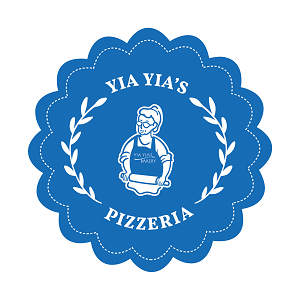 Closed$4.00 Delivery4.8
Closed$4.00 Delivery4.8
Best Cannoli in Philadelphia
- Pizzeria Pesto
 Closed$2.00 Delivery5.0
Closed$2.00 Delivery5.0 - Big Ben PizzaClosed$2.99 Delivery4.8
- Shef's Pizza
 Closed$2.50 - $7.00 Delivery4.9
Closed$2.50 - $7.00 Delivery4.9 - Luigi's Pizza FrescaClosed$2.50 - $3.00 Delivery5.0
- Montesini PizzaClosed$2.00 Delivery5.0
- Pizzeria Pesto
 Closed$2.00 Delivery5.0
Closed$2.00 Delivery5.0 - Big Ben PizzaClosed$2.99 Delivery4.8
- Shef's Pizza
 Closed$2.50 - $7.00 Delivery4.9
Closed$2.50 - $7.00 Delivery4.9 - Luigi's Pizza FrescaClosed$2.50 - $3.00 Delivery5.0
- Montesini PizzaClosed$2.00 Delivery5.0
- Angelo's Pizzeria & Family Restaurant
 Closed$3.00 Delivery5.0
Closed$3.00 Delivery5.0 - Italian ExpressClosed$3.00 Delivery5.0
- Speedy's PizzaClosed$2.50 Delivery4.8
- Tony's Pizzeria
 Closed$1.50 Delivery4.8
Closed$1.50 Delivery4.8 - Pizzata Pizzeria & Birreria
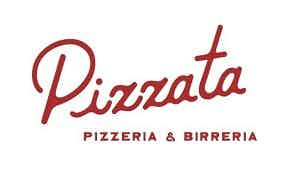 Closed$6.90 Delivery4.8
Closed$6.90 Delivery4.8 - Mr P Pizza & Pasta
 Closed$3.00 Delivery4.5
Closed$3.00 Delivery4.5 - Franco's Pizza
 Closed$4.99 Delivery4.9
Closed$4.99 Delivery4.9 - Big Daddy Pizza
 Closed$2.50 Delivery5.0
Closed$2.50 Delivery5.0 - Big Al's Italiano
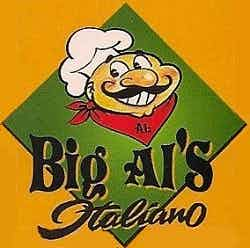 Closed$2.25 Delivery4.8
Closed$2.25 Delivery4.8 - Northeast Pizza Co.
 Closed$4.00 Delivery4.7
Closed$4.00 Delivery4.7
Best Cannoli in Houston
- Buona Bora PizzaClosed$3.50 Delivery4.9
- Original Napoli Pizza & Pasta
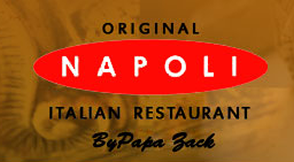 Closed$2.00 Delivery4.9
Closed$2.00 Delivery4.9 - Brother's Pizza ExpressClosed$5.50 Delivery4.7
- Trattoria Pizza & Pasta
 Closed$4.95 Delivery4.7
Closed$4.95 Delivery4.7 - Pepperoni's
 Closed$4.00 Delivery4.8
Closed$4.00 Delivery4.8
- Buona Bora PizzaClosed$3.50 Delivery4.9
- Original Napoli Pizza & Pasta
 Closed$2.00 Delivery4.9
Closed$2.00 Delivery4.9 - Brother's Pizza ExpressClosed$5.50 Delivery4.7
- Trattoria Pizza & Pasta
 Closed$4.95 Delivery4.7
Closed$4.95 Delivery4.7 - Pepperoni's
 Closed$4.00 Delivery4.8
Closed$4.00 Delivery4.8 - Original Napoli Beechnut
.png?auto=format&fit=max&q=10) Closed$3.50 Delivery4.9
Closed$3.50 Delivery4.9 - The Spaghetti Western Italian Cafe
 Closed$6.90 Delivery4.7
Closed$6.90 Delivery4.7 - Dan's Pizza ''In The Mont''
 Closed$4.00 - $10.00 Delivery4.7
Closed$4.00 - $10.00 Delivery4.7 - Pizza Square
 Closed$3.90 Delivery4.5
Closed$3.90 Delivery4.5 - Pepperoni's
 Closed$5.00 Delivery4.6
Closed$5.00 Delivery4.6 - Pepperoni'sClosed$4.95 Delivery4.1
- Bambolino's Italian Kitchen
 Closed$5.90 Delivery4.3
Closed$5.90 Delivery4.3 - Empire Pizza
 Closed$4.95 Delivery4.4
Closed$4.95 Delivery4.4 - Big Ben's PizzeriaClosed$5.90 Delivery4.9
Best Cannoli in New York
- Lunetta Pizza
 ClosedFree Delivery4.8
ClosedFree Delivery4.8 - Famous Original Ray's Pizza
 ClosedFree Delivery4.8
ClosedFree Delivery4.8 - La Vita Pizza RestaurantClosedFree Delivery5.0
- Pizza NapoliClosedFree Delivery4.9
- San Matteo Pizzeria e Cucina
 ClosedFree Delivery4.9
ClosedFree Delivery4.9
- Lunetta Pizza
 ClosedFree Delivery4.8
ClosedFree Delivery4.8 - Famous Original Ray's Pizza
 ClosedFree Delivery4.8
ClosedFree Delivery4.8 - La Vita Pizza RestaurantClosedFree Delivery5.0
- Pizza NapoliClosedFree Delivery4.9
- San Matteo Pizzeria e Cucina
 ClosedFree Delivery4.9
ClosedFree Delivery4.9 - Romano Pizza RestaurantClosedFree Delivery5.0
- Claudio Pizzeria
 ClosedFree Delivery5.0
ClosedFree Delivery5.0 - San Matteo TakeawayClosed$2.00 Delivery4.7
- Francesco's Pizza
 Closed$3.00 Delivery5.0
Closed$3.00 Delivery5.0 - Libretto's Pizzeria
 ClosedFree Delivery4.9
ClosedFree Delivery4.9 - Lunetta Pizza & Restaurant
 Closed$1.50 Delivery4.8
Closed$1.50 Delivery4.8 - Casabianca Pizzeria
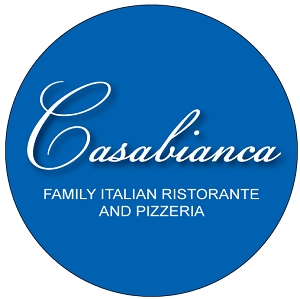 Closed$1.99 Delivery4.9
Closed$1.99 Delivery4.9 - Rosetta PizzaClosedFree Delivery4.9
- Freddie & Pepper's
 Closed$1.00 Delivery4.8
Closed$1.00 Delivery4.8 - La Vera Pizzeria & Restaurant
 Closed$2.00 Delivery5.0
Closed$2.00 Delivery5.0
The Cannoli Story
But what are cannoli?
They are sweet pastries originating in Sicily, Italy, which are popular and beloved worldwide.
They are cream-filled pastry shells or tubes, usually 3.5 inches long. However, some cities make them extra-large, up to 7.5 inches long.
The name derives from the singular form of the Italian word “cannolo” meaning “little tube”. However, in English-speaking countries usually, the plural form “cannoli” is used to describe this dish. Therefore, it’s not unusual to hear the colloquial term “cannolis”, too.
In fact, this dessert is so popular in the US nowadays, it has its own National day on the 16th of June!
Origin
The origin of this dessert is uncertain, though there are few stories connected to it.
There are records of Roman’s great orator Cicero mentioning a “sweet edible tube filled with milk cream” from 70 BC. Sounds familiar, right?
However, many believe that cannoli were first invented in Sicily, in the years under Arab domination. The exact city was Caltanissetta, and the period was between 827 and 1091 AD.
At that time, an Arab prince had a harem in Caltanissetta (then Qal’at al-Nisa or Fort of the women). He resided there with many of his concubines who created this dessert.
Through the years they were making many luscious meals and desserts, and this one was inspired by the prince himself. Many historians agree with this story, mostly because some of the ingredients (sugar cane, almonds) were used only by the Muslims at that time.
However, another story claims it was the nuns at the convent in Caltanissetta who invented the dessert. During the middle ages, they wanted to create something special for the Carnevale. The result was a treat with a shape of a faucet, as a symbol of fertility.
Moreover, many sources believe in a combination of both stories. Thus, at the end of Arab domination of Sicily many concubines stayed there. In the search for a new life, many of them ended in a place where they were accepted – in a convent.
There they shared the recipe with the nuns, and the dessert became a mix of Arab and Roman culinary traditions.
The dessert was made primarily for festivities, but it soon became customary throughout the whole year. With migration, it got following in other countries and shortly became beloved worldwide.
In the US it was brought with the Italian immigrants in the 1900s. Moreover, it was modified to suit local taste and was made with local ingredients.
Ingredients
Speaking of ingredients, they can be divided into two sections:
- For the shells: The shells (or tubes) are made with dough consisting of flour, egg, butter, oil, sugar, marsala wine or white wine, and a little salt. The dough is cut into circles, which are then wrapped around cannoli molds. They are fried in oil or lard at high temperatures.
Local chefs make the shells with cold butter at a high temperature to ensure their crispiness and flakiness.
- For the filling: The filling is made with well-drained ricotta and powdered sugar. However, many additional ingredients can be used such as cinnamon, mini chocolate chips, vanilla extract, heavy cream, orange or lemon zest, mascarpone, candied fruits, and more.
Furthermore, some recipes include crushed pistachios, almonds, crackers, cocoa, or even sprinkles into the filling. Others suggest dipping one side of the shell in melted chocolate.
Cannoli Cake
Rather than a pastry, this dessert can be made as a cake. It has the same ingredients as the pastry, but on two, three, or more tiers. It is a light, moist cake with mascarpone and ricotta filling.
Calories
Regarding the size and the filling ingredients, there can be from 150 (for a mini version) to 380 calories in one serving. Furthermore, there are 17g of fat, 44 g of carbs, 10 grams of protein, and 1 gram of fiber in a single pastry.
Cannoli near you
Looking for delicious, crispy, and flavorful cannoli near you? Get them from New York’s Libretto’s Pizzeria. In Baltimore? Satisfy your sugar cravings in Filippo’s Pizzeria. Both available for pickup and delivery through the Slice app.

Testimonials
Great pizza and cannolis!
Mario's Pizza
People Also Ask:
Browse More Dishes
EVEN MORE DISHES NEAR YOU
Fried Chicken
•California Salad
•Italian Pizza
•Angus Burger
•Broccoli Roll
•Cuban Panini
•Chocolate Sundae
•Gyro Sandwich
•Western Omelette
•Chicken Piccata
•Tuna Salad Sandwich
•Gelato
•French Dip Sandwich
•Buffalo Chicken Wrap
•Fish Sub
•Veal Parmesan
•Cookie Pizza
•Crab Cake
•Chicken Cheesesteak
•Eggplant Pizza
•Turkey Sub
•Mushroom Swiss Burger
•Rice Balls
•Sausage Parmigiana Sub
•Sweet Potato Pie
•New York Steak
•Chicken Curry
•Italian Wrap
•Combo Sandwich
•Gyro Pizza
•Snapple Tea
•Baby Spinach Salad
•Veal Parmigiana Sandwich
•



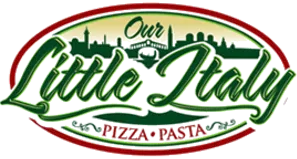


.jfif?auto=format&fit=max&q=10)

.jfif?auto=format&fit=max&q=10)




